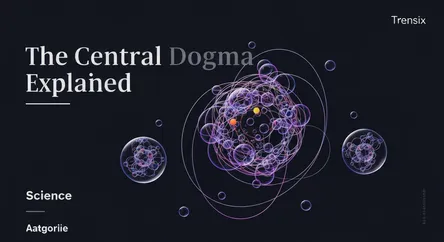Science
The Central Dogma Explained

Discover the central dogma of molecular biology, the fundamental process of how genetic information flows from DNA to RNA to create functional proteins.
What is it?
The central dogma of molecular biology is the process describing how genetic information flows in a cell. Proposed by Francis Crick, it states that DNA is transcribed into messenger RNA (mRNA), which is then translated into a protein. DNA holds the permanent blueprint, RNA is the temporary message, and proteins are the functional molecules that perform life's tasks. This "DNA → RNA → protein" pathway is fundamental to life and explains how genetic instructions are ultimately expressed.
Why is it trending?
The central dogma is trending due to its role in modern medical breakthroughs. Technologies like mRNA vaccines directly use the translation step to teach our immune system how to fight disease. Meanwhile, CRISPR gene-editing technology allows scientists to rewrite the DNA blueprint itself. These powerful applications have brought this once-academic concept into the public spotlight, highlighting its real-world importance in health and science and driving conversations about the future of biotechnology.
How does it affect people?
This principle is the key to understanding human health and disease. Many genetic disorders are caused by errors in the DNA-to-protein pipeline. Understanding this flow allows for the development of gene therapies, targeted drugs, and advanced diagnostics. By manipulating this process, scientists can create life-saving treatments for conditions ranging from genetic diseases to cancer and viral infections, fundamentally shaping the future of medicine for everyone.